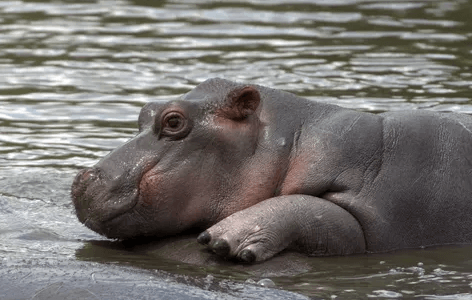Baby:_Tsh60p5rp8= Hippo

The intriguing life of Baby:_Tsh60p5rp8= Hippo presents a fascinating blend of physical characteristics, behavioral nuances, and social dynamics. From their distinctive grayish-pink skin to their dependence on maternal care in the early stages, these young mammals embody a unique survival strategy within their aquatic habitats. As we explore the complexities of their social structure and the critical conservation efforts aimed at safeguarding their future, one must consider the broader implications of environmental changes on these captivating creatures. What does the future hold for hippos as their habitats face increasing pressures?
Physical Characteristics of Baby Hippos
At birth, baby hippos, known as calves, are strikingly small compared to their massive adult counterparts, typically weighing between 50 to 110 pounds.
Their round bodies are covered in smooth, hairless skin that appears grayish-pink.
In their early weeks, baby hippos primarily consume their mother’s rich milk, which is essential for rapid growth, as they begin to explore a more varied diet later.
Natural Habitat and Behavior
Baby hippos thrive in the warm, aquatic environments of rivers and lakes where they can find both safety and nourishment.
Their feeding habits primarily involve grazing on grasses near the water’s edge, facilitated by their aquatic adaptations.
These adaptations, such as buoyancy and streamlined bodies, allow them to navigate effortlessly through their habitat, ensuring they remain agile hunters in a world rich with opportunities.
Read Also Pinterest:_K5ftwawefm= Drawings
Social Structure of Hippo Families
In the intricate social structure of hippo families, strong bonds and hierarchies play a crucial role in their survival and well-being.
Hippos engage in complex hippo communication, utilizing vocalizations and body language to reinforce relationships and establish dominance.
Maternal care is paramount, with mothers fiercely protecting their young, ensuring they thrive within the group, thus maintaining the cohesion essential for the family’s overall health.
Conservation Efforts for Hippos
The intricate social bonds among hippo families highlight the importance of preserving their natural habitats and ensuring their survival in the wild.
Conservation efforts focus on habitat preservation, combating hippo poaching, and promoting awareness.
Conclusion
In the gentle embrace of sun-dappled waters, Baby:_Tsh60p5rp8= Hippo frolic beneath the surface, their smooth, grayish-pink skin glistening like polished stone. Each playful splash echoes the vitality of these endearing creatures, whose survival hinges on the delicate balance of their natural habitats. As conservation efforts take root, the hope for thriving hippo populations stirs like ripples across a serene pond, inviting a future where these charming giants continue to grace the wild with their presence.




